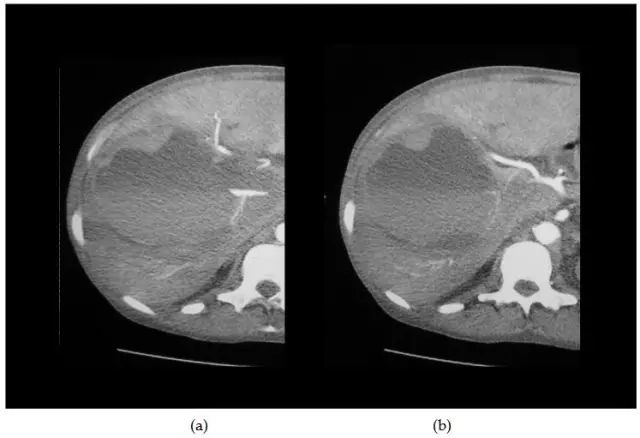- Author Rachel Wainwright [email protected].
- Public 2023-12-15 07:39.
- Last modified 2025-11-02 20:14.
Cervical biopsy
A biopsy of the cervix is performed after abnormalities are found on a gynecological examination or based on test results. The cervix is the narrow and lower part of the uterus that connects the vagina and the uterus, located between the rectum and the bladder, and a tissue sample is taken from it for further analysis and confirmation or refutation of suspicions of abnormalities, precancerous conditions, or cancer.
Features of the procedure
The biopsy is performed on the 5-7th day of the cycle, after the cessation of menstrual bleeding. It is possible to take material for research only in the absence of infection, therefore, before the biopsy, the flora of the vagina must be examined. If an infection is detected, the woman is first prescribed treatment and only after good test results are obtained a biopsy is performed.
A cervical biopsy is a painless, short-term procedure, carried out without anesthesia: there are no painful endings on the cervix, and during the procedure, the woman feels only light stretching - this is the uterus contracting in response to touching the instruments. Relaxation is enough to reduce contractions.
A scalpel, radio knife, biopsy forceps, and an electric loop are used to collect material.
A biopsy is performed under the control of a colposcope - a device similar to a microscope, and Lugol's solution is used as a dye to indicate the altered area of the epithelium.
Biopsy of the cervix with erosion
Erosion of the cervix is called redness that a gynecologist can detect with a standard visual examination. Redness indicates that there is inflammation on the cervix, which means that the risk of infection is increased. Antibiotic therapy is often ineffective, and it is necessary to work directly with the focus of inflammation. Therefore, in addition to colposcopy, a woman is prescribed to undergo a biopsy of the cervix with erosion - to determine the state of the epithelium and choose an approach to treatment: medication or surgical.

With erosion, a biopsy of the cervix helps to identify chronic cervicitis - antiviral or anti-inflammatory treatment is prescribed; squamous cell metaplasia - an erosion healing process that does not require treatment; leukoplakia - the disease is treated with surgery; flat warts - antiviral therapy is prescribed and, possibly, after a second biopsy, surgery; dysplasia - anti-inflammatory, antiviral or surgical treatment is prescribed; cervical cancer - a woman should be under the supervision of an oncologist and receive appropriate treatment.
Types of cervical biopsy
Depending on the results of colposcopy and the condition of the cervix, a biopsy can take either a small sample of tissue or remove the area where the abnormality is found. Therefore, the following types of biopsy are distinguished:
- conization. Using a scalpel or laser, a cone-shaped piece of tissue is removed from the cervix;
- trepanobiopsy. Material for research - small pieces of epithelium are taken from several parts of the cervix;
- endocervical biopsy. With the help of a special tool - curettes from the cervical canal scrape mucus;
What happens after the biopsy
After the procedure, a woman may feel moderate spastic pain for a few more days, which can be relieved by taking anesthetic.
The recovery period after a biopsy can take several days or weeks. At this time, there may be discharge after a biopsy of the cervix - both slight, brown, and moderate vaginal bleeding.
After a cervical biopsy, you should refrain from physical activity and sexual activity for at least two weeks.
Discharge after a biopsy of the cervix can be greenish or brown and take several days if an extended colposcopy was performed before the procedure and the cervix was treated with special solutions.
Yellow discharge from a cervical biopsy or discharge with an unpleasant, pungent odor may indicate an infection, so a woman should see a doctor.
They also seek medical help if, during the recovery period, the following symptoms appear:
- Heavy vaginal bleeding, similar in intensity to or greater than menstrual bleeding;
- severe pain in the lower abdomen;
- the temperature has risen.
After a biopsy and analysis of the results obtained, a woman can be assigned either a repeated colposcopic examination, or adequate treatment of the identified abnormalities.
Found a mistake in the text? Select it and press Ctrl + Enter.






